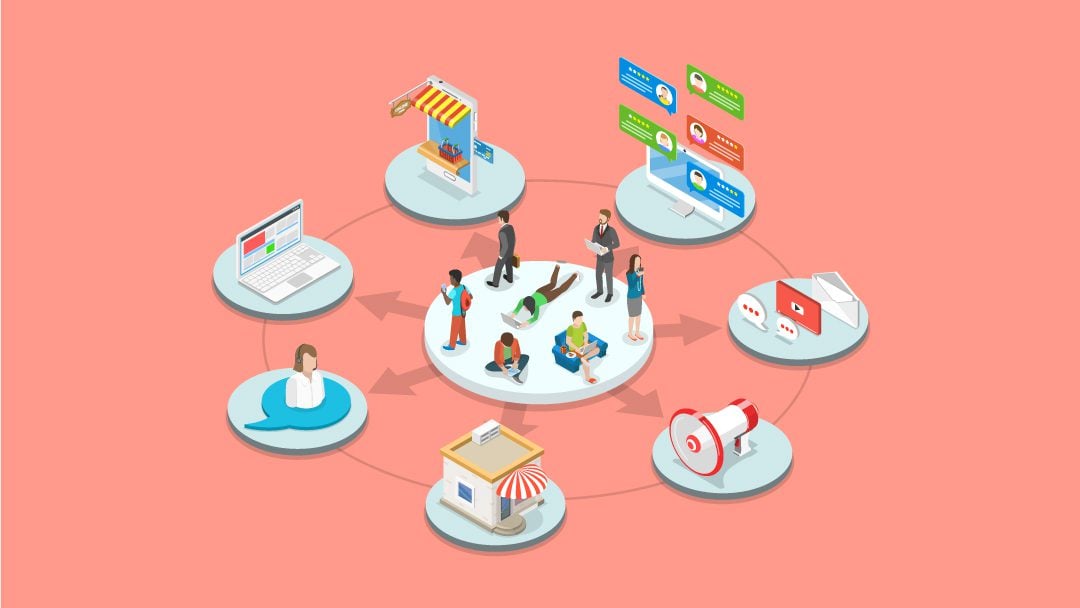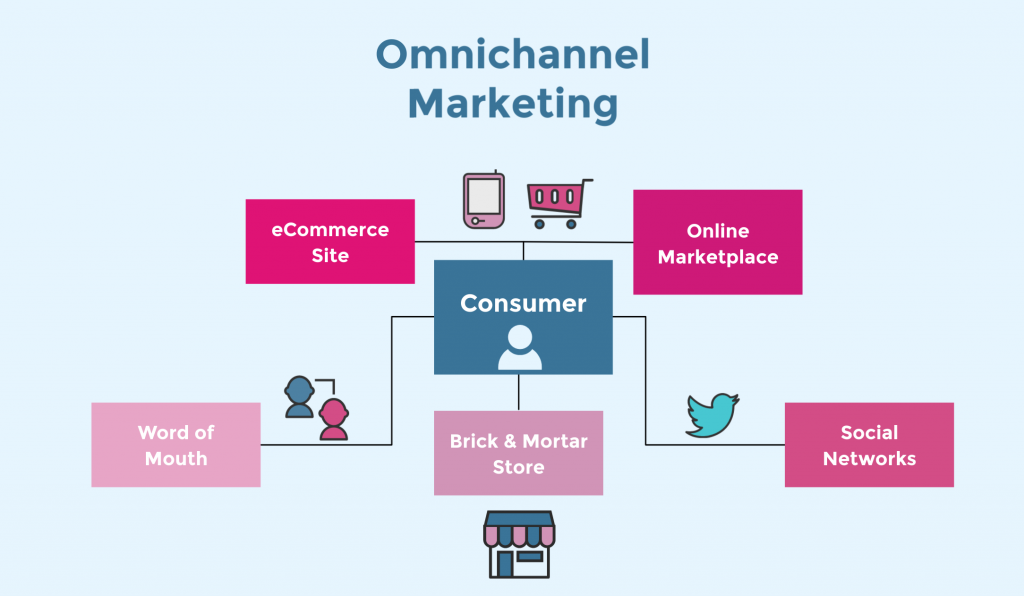
Omnichannel marketing is a strategy that allows businesses to market their products and services across multiple channels, such as email, social media, and TV advertising.

Marketing has changed a lot over the years, and it’s only going to keep changing.
The days of one size fitting all are long gone; now we need to create an omnichannel approach that is tailored to each customer and their needs.
The idea is that the customer should be able to find what they’re looking for no matter which channel they use.
This is the foundation of Next-Generation Marketing.
With an omnichannel approach, you can increase engagement and sales by catering your message to each audience based on where they are in the purchase process.

The good news is that it has never been easier! We live in a time of unprecedented technological advances, and there are so many options for marketing your business on different channels.
This blog post will discuss how you can create an omnichannel approach for your business!
Based on numerous omnichannel studies and reports, here are a few compelling reasons why omnichannel marketing should be your next big focus.

Build an Omnichannel Strategy For eCommerce Stores because omnichannel strategies work better than single channnel, according to this graph
What this shows us is that omnichannel marketing not only lets you maximize reach but also boosts engagement and sales.
But an omnichannel approach offers way more benefits than just these. I’ll link an article with curated statistics on the benefits of being omnipresent.
One of the first steps in any marketing journey should be getting a solid grasp of who your target audience is.
What are their problems, where do they look for solutions and where are they located? Either online or geographically.
This will allow you to understand where they are in the purchase process and how best to engage with them through different channels.
It might be beneficial for your business if someone browsing on Facebook is targeted differently than someone who has signed up for a newsletter.
It’s also important to understand how the customer interacts with each channel before you start creating content so that it can be tailored specifically for them.
If you’re having trouble understanding how your customers interact with your content, then A.I. can help you make more sense of things.
We’ve recently written an article about how AI is re-shaping digital marketing. Definitely worth a read!
Everyone knows TV and radio ads are interruptive.
You either have to sit through them or change the channel until they’re over, which means they can be jarring when you’re in the middle of browsing online.
However, we’ve become accustomed to short ad breaks on our social media feeds during a scrolling session.
This means ads are becoming less intrusive and more easily digestible, so they can be used to engage with customers in a different way than other channels.
In order to reach your target market, you’ll have to figure out where they are most likely to engage with your brand.
Social media has a far reach and is great for engagement, but it’s not always best used as only a marketing channel because there aren’t many hard conversions taking place on social media.
Email newsletters can be useful if you want to keep in touch with customers over time, but they’re not the best for immediately selling your product.
Think about which channels are most effective at reaching different customer types, and how you can tailor each message to them accordingly.
This means understanding what content is more likely to be shared on social media vs mass emails, or why one demographic responds better to TV ads than another group.
Create a content plan for each channel to set realistic goals and expectations
It’s also important that you create a short-term and long-term strategy in order to be successful with an omnichannel approach.

A customer journey map is a step-by-step outline of all the steps a customer makes in his life cycle.
From the moment he encounters his first problem he needs a solution for, to the moment he buys, up until the moment where he becomes a repeat customer (or not).
Outline how you will engage during each step of this process with customers on each channel so that your marketing plan is well-rounded.
Then, you can use this map to determine what content works best on each channel and establish realistic goals for engagement.
For example, if Facebook has a high number of followers and a high engagement rate, you could use it as your main channel for reaching customers.
However, if Pinterest is better suited to displaying product images for conversions then you can prioritize that in addition to Facebook rather than instead of it.
While it can be challenging to come up with a solid strategy for your business, don’t forget the importance of creativity.
You should never stop experimenting and trying new things in order to discover what works best for you because there are no one-size-fits-all solutions.
Each channel has different qualities that appeal to users in different ways.
You can use your customer journey map to outline goals and expectations.
Then, regularly try new things in order to discover what works best for you and update your plan accordingly!
It might take some time before you find the most effective way of engaging with customers on each channel, but it’s worth taking that extra bit of effort in order to be successful with an omnichannel approach.
Keeping your content relevant to the marketing channel is crucial.
Longer videos that are made by influencers work really well on YouTube, shorter videos work great on TikTok and Instagram Reels, and photos and videos both do well on Facebook and Instagram.
Longer text-based content does well for things like blog posts or email newsletters.
Omnichannel marketing means using different channels, like TV, YouTube, and social media. This is not the same as repeating the same message over and over.
It means making the most of different channels so that they lead customers through a journey that eventually convinces them to make a purchase.
As you keep up your campaign, you’ll also see which content forms do best on which channels, so you can adapt future posts accordingly.
Keep testing and finding out what content performs best and what platforms.
When you find your winners, you scale them and increase their budget, and keep doing more of what’s working!

You need to make sure your website is ready for different devices, especially mobile ones.
According to a recent report, 79% of smartphone users purchased something using their smartphone in the last 6 months.
Nowadays, most website builders have functionalities built-in that make their websites responsive by default. So if you’re using a modern Content Management System (CMS), this shouldn’t be an issue.
If you don’t want to lose out on potential sales or leads, then make sure that it’s easy for your potential customers to view, browse, sign-up, or purchase from your site.
Be sure to create a short-term and long-term strategy if you’re striving for a successful omnichannel approach.
Develop a customer journey map and outline how you will engage during each step of this process with potential customers.
When doing this, create a custom table of contents where you outline what type of content you want to show during each step of their customer journey.
This helps make sure your marketing plan is well-rounded and that you educate your potential customers on everything they need to know.
Then implement the strategy, measure results, and adjust as needed!
Brenton Way provides omnichannel growth marketing strategies that help you 10X your business.
We can create content for you from scratch, provide consulting on how best to implement an omnichannel strategy, take care of your social media management, and do much more.
We have worked with many different types of businesses to help them achieve their goals.
Contact us and let’s book a free consultation where we talk about how we can make your marketing better.


